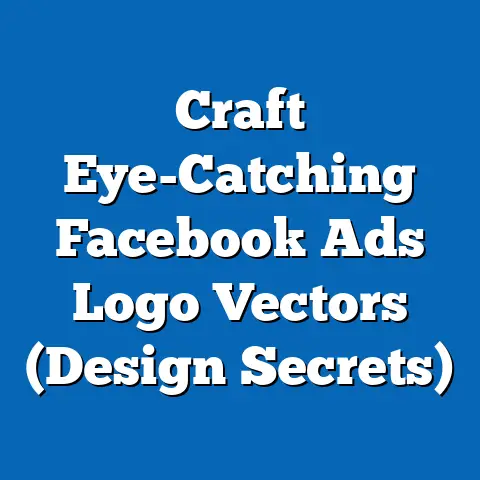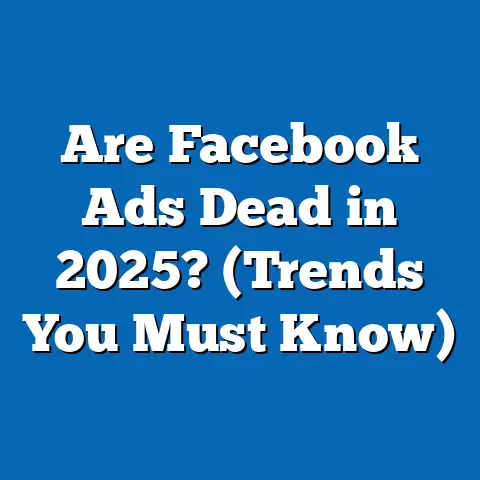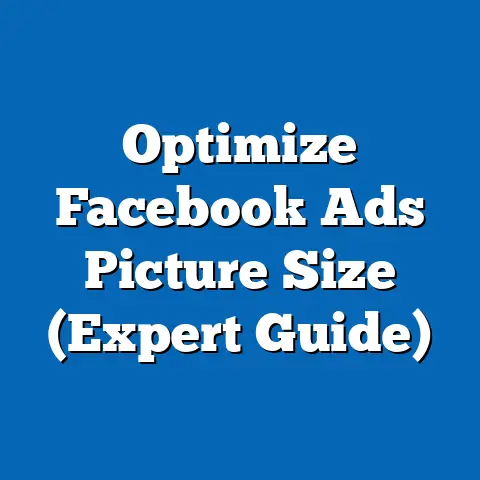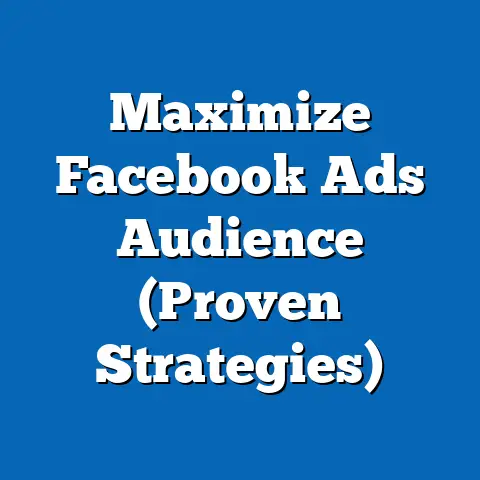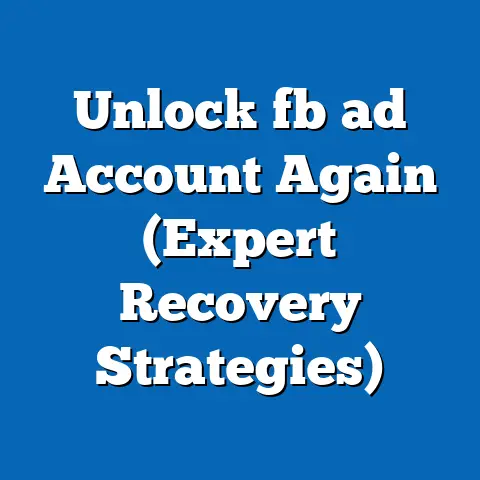Boost Sales with Promo Code Facebook Ads (Proven Strategies)
Remember that time when planking was all the rage? Or when everyone was obsessed with those optical illusion dresses that looked blue and black to some, but gold and white to others? Social media trends can take over the world in a matter of hours, creating a frenzy of excitement and engagement. Just like the thrill of participating in a viral TikTok dance challenge, discovering a promo code that unlocks significant savings evokes a sense of urgency and collective excitement. Imagine the digital stampede to snag that limited-time offer!
In today’s fast-paced digital landscape, social media, especially Facebook, has revolutionized marketing and sales strategies. No longer are we limited to static billboards and print ads. Now, we have the power to connect with our target audience on a personal level, delivering tailored messages that resonate with their needs and desires. Promo codes, once relegated to the Sunday newspaper, have become a potent tool for businesses seeking to engage customers and drive sales.
This article dives deep into the world of promo code Facebook ads, exploring proven strategies that will help you enhance your sales performance. I’ll share my experiences, insights, and actionable tips to help you create campaigns that convert. Get ready to unlock the power of discounts and drive your business to new heights!
Section 1: Understanding Promo Codes in the Digital Age
Definition and Overview
At its core, a promo code (also known as a coupon code, discount code, or voucher code) is a string of letters, numbers, or both that customers can enter during the checkout process to receive a discount or special offer on their purchase. Promo codes have a rich history, dating back to the late 19th century when Coca-Cola introduced the first coupon to incentivize purchases. These early coupons were physical paper slips that customers could redeem for a free bottle of Coke.
Over time, coupons evolved into more sophisticated marketing tools, appearing in newspapers, magazines, and direct mail campaigns. With the advent of the internet, promo codes made the leap to the digital realm, becoming an integral part of e-commerce and online marketing.
Consumer Behavior Insights
Modern consumers are savvy shoppers who actively seek out deals and discounts before making a purchase. According to a recent study by RetailMeNot, 90% of consumers use coupons or promo codes when shopping online. This highlights the significant influence that discounts have on purchasing decisions.
Furthermore, consumers are more likely to complete a purchase if they have a promo code. A study by Statista found that 48% of consumers abandon their shopping carts due to a lack of free shipping or other promotional offers. This underscores the importance of providing incentives to encourage customers to finalize their transactions.
Promo codes also play a crucial role in building customer loyalty. When businesses offer exclusive discounts to their loyal customers, they create a sense of appreciation and incentivize repeat purchases. This can lead to increased customer retention and long-term revenue growth.
The Role of Facebook Ads
Facebook ads offer a unique combination of targeting capabilities, audience reach, and engagement potential, making them an ideal platform for promoting promo codes. With Facebook’s advanced targeting options, you can reach specific demographics, interests, and behaviors, ensuring that your ads are seen by the most relevant audience.
Facebook boasts a massive user base, with billions of active users worldwide. This provides businesses with unparalleled reach, allowing them to connect with potential customers across the globe. Moreover, Facebook’s interactive ad formats, such as image ads, video ads, and carousel ads, enable you to showcase your products and promo codes in an engaging and visually appealing manner.
The platform’s algorithm also allows for sophisticated A/B testing, meaning you can experiment with different promo codes, visuals, and copy to see what works best. This data-driven approach ensures that your campaigns are constantly optimized for maximum performance.
Key Takeaway: Promo codes are a powerful tool for driving sales and building customer loyalty. Facebook ads provide the ideal platform for promoting promo codes to a targeted audience, leveraging the platform’s reach and engagement capabilities.
Section 2: Crafting the Perfect Promo Code
Types of Promo Codes
Choosing the right type of promo code is crucial for maximizing its impact on your target audience. Here’s a breakdown of the most common types and their psychological impacts:
-
Percentage Discounts: Offering a percentage off the total purchase price (e.g., 20% off) is a straightforward and appealing way to incentivize customers. This type of promo code is particularly effective for high-priced items, as the savings can be substantial.
-
Fixed Amount Off: Providing a fixed dollar amount off (e.g., $10 off) can be more attractive to customers purchasing lower-priced items. This type of promo code creates a sense of immediate value and can encourage impulse purchases.
-
Free Shipping: Shipping costs are a major deterrent for online shoppers. Offering free shipping can significantly increase conversion rates, especially for customers who are on the fence about making a purchase.
-
Buy One, Get One (BOGO): BOGO offers create a sense of urgency and encourage customers to purchase multiple items. This type of promo code is particularly effective for products with high profit margins.
-
Free Gift with Purchase: Offering a free gift with purchase can be a great way to add value to your products and incentivize customers to buy. This type of promo code is particularly effective for luxury goods and cosmetics.
Percentage Discounts: Offering a percentage off the total purchase price (e.g., 20% off) is a straightforward and appealing way to incentivize customers. This type of promo code is particularly effective for high-priced items, as the savings can be substantial.
Fixed Amount Off: Providing a fixed dollar amount off (e.g., $10 off) can be more attractive to customers purchasing lower-priced items. This type of promo code creates a sense of immediate value and can encourage impulse purchases.
Free Shipping: Shipping costs are a major deterrent for online shoppers. Offering free shipping can significantly increase conversion rates, especially for customers who are on the fence about making a purchase.
Buy One, Get One (BOGO): BOGO offers create a sense of urgency and encourage customers to purchase multiple items. This type of promo code is particularly effective for products with high profit margins.
Free Gift with Purchase: Offering a free gift with purchase can be a great way to add value to your products and incentivize customers to buy. This type of promo code is particularly effective for luxury goods and cosmetics.
The psychological impact of each type of promo code varies. Percentage discounts appeal to those seeking the best overall deal, while fixed amounts can feel more tangible for smaller purchases. Free shipping eliminates a common barrier, and BOGO deals incentivize higher order values. Understanding these nuances allows you to tailor your offers for maximum impact.
Creating Urgency
Creating a sense of urgency is essential for compelling customers to act quickly and take advantage of your promo code. Here are some strategies for creating time-sensitive offers:
-
Limited-Time Offers: Set an expiration date for your promo code to create a sense of scarcity and encourage customers to make a purchase before the offer expires.
-
Flash Sales: Run short-term flash sales with significant discounts to generate excitement and drive immediate sales.
-
Countdown Timers: Use countdown timers in your ads and on your website to visually reinforce the limited-time nature of your offer.
-
Limited Quantity: Highlight that the promo code is only available for a limited number of uses, further incentivizing immediate action.
Limited-Time Offers: Set an expiration date for your promo code to create a sense of scarcity and encourage customers to make a purchase before the offer expires.
Flash Sales: Run short-term flash sales with significant discounts to generate excitement and drive immediate sales.
Countdown Timers: Use countdown timers in your ads and on your website to visually reinforce the limited-time nature of your offer.
Limited Quantity: Highlight that the promo code is only available for a limited number of uses, further incentivizing immediate action.
For example, a clothing retailer might run a “24-Hour Flash Sale: 50% Off All Dresses!” This creates a strong sense of urgency, prompting customers to browse and buy before the sale ends.
Customizing Codes for Target Audiences
Tailoring promo codes to specific segments of your audience can significantly increase their effectiveness. Here’s how to customize codes based on shopping behavior, demographics, and interests:
-
New Customers: Offer a special discount to new customers to incentivize their first purchase.
-
Loyal Customers: Reward your loyal customers with exclusive promo codes as a thank you for their continued support.
-
Abandoned Cart Recovery: Send promo codes to customers who have abandoned their shopping carts to encourage them to complete their purchase.
-
Demographic Targeting: Tailor promo codes to specific demographic groups based on their age, gender, location, or income level.
-
Interest Targeting: Offer promo codes for products that align with your target audience’s interests.
New Customers: Offer a special discount to new customers to incentivize their first purchase.
Loyal Customers: Reward your loyal customers with exclusive promo codes as a thank you for their continued support.
Abandoned Cart Recovery: Send promo codes to customers who have abandoned their shopping carts to encourage them to complete their purchase.
Demographic Targeting: Tailor promo codes to specific demographic groups based on their age, gender, location, or income level.
Interest Targeting: Offer promo codes for products that align with your target audience’s interests.
For instance, a beauty brand might offer a “Welcome15” code for 15% off to new subscribers. They might also send a “Loyalty20” code for 20% off to customers who have made three or more purchases. These personalized offers resonate more deeply, leading to higher conversion rates.
Key Takeaway: Crafting the perfect promo code involves choosing the right type of offer, creating a sense of urgency, and customizing codes to resonate with specific target audiences.
Section 3: Designing Effective Facebook Ads
Visual Appeal
In the visually-driven world of Facebook, capturing attention with eye-catching visuals is paramount. Here are some tips for creating images and videos that align with your promo code message:
-
High-Quality Images: Use high-resolution images that showcase your products in an appealing and professional manner.
-
Eye-Catching Colors: Choose color schemes that are visually striking and align with your brand identity.
-
Promo Code Prominence: Make sure your promo code is clearly visible in your ad visuals.
-
Lifestyle Imagery: Use lifestyle imagery that shows your products in use and resonates with your target audience.
-
Video Ads: Create short, engaging video ads that highlight your promo code and showcase the benefits of your products.
High-Quality Images: Use high-resolution images that showcase your products in an appealing and professional manner.
Eye-Catching Colors: Choose color schemes that are visually striking and align with your brand identity.
Promo Code Prominence: Make sure your promo code is clearly visible in your ad visuals.
Lifestyle Imagery: Use lifestyle imagery that shows your products in use and resonates with your target audience.
Video Ads: Create short, engaging video ads that highlight your promo code and showcase the benefits of your products.
For example, a food delivery service might use a vibrant image of a delicious meal with the promo code “TAKE20” overlaid in bold text. This quickly conveys the offer and entices viewers to click.
Compelling Copywriting
Persuasive ad copy is essential for highlighting the value of your promo code and driving clicks. Here’s how to write copy that converts:
-
Headline: Use a strong headline that grabs attention and clearly communicates the value of your offer.
-
Description: Provide a brief description of your products and the benefits of using your promo code.
-
Call to Action (CTA): Include a clear and compelling CTA that tells customers what you want them to do (e.g., “Shop Now,” “Get Your Discount,” “Redeem Now”).
-
Urgency Language: Use language that creates a sense of urgency and encourages customers to act quickly (e.g., “Limited Time Offer,” “Sale Ends Soon,” “Don’t Miss Out”).
-
Benefit-Driven Language: Focus on the benefits of your products and how the promo code will enhance the customer’s experience.
Headline: Use a strong headline that grabs attention and clearly communicates the value of your offer.
Description: Provide a brief description of your products and the benefits of using your promo code.
Call to Action (CTA): Include a clear and compelling CTA that tells customers what you want them to do (e.g., “Shop Now,” “Get Your Discount,” “Redeem Now”).
Urgency Language: Use language that creates a sense of urgency and encourages customers to act quickly (e.g., “Limited Time Offer,” “Sale Ends Soon,” “Don’t Miss Out”).
Benefit-Driven Language: Focus on the benefits of your products and how the promo code will enhance the customer’s experience.
A powerful headline might read: “Save 30% on Your Next Adventure! Use Code EXPLORE30.” The description could then elaborate: “Gear up for your next outdoor adventure with high-quality equipment at unbeatable prices. Redeem EXPLORE30 at checkout for 30% off your entire order.”
A/B Testing
A/B testing different ad versions is crucial for identifying the most effective combinations of visuals, copy, and promo codes. Here’s how to conduct A/B tests on Facebook:
-
Create Multiple Ad Sets: Create multiple ad sets with different variations of your ads.
-
Test Different Visuals: Test different images, videos, and color schemes to see which ones resonate best with your audience.
-
Test Different Copy: Test different headlines, descriptions, and CTAs to see which ones drive the most clicks and conversions.
-
Test Different Promo Codes: Test different types of promo codes (e.g., percentage discounts vs. fixed amounts off) to see which ones are most appealing to your audience.
-
Analyze Results: Track the performance of each ad set and identify the winning variations.
-
Optimize Campaigns: Use the results of your A/B tests to optimize your campaigns and improve your ROI.
Create Multiple Ad Sets: Create multiple ad sets with different variations of your ads.
Test Different Visuals: Test different images, videos, and color schemes to see which ones resonate best with your audience.
Test Different Copy: Test different headlines, descriptions, and CTAs to see which ones drive the most clicks and conversions.
Test Different Promo Codes: Test different types of promo codes (e.g., percentage discounts vs. fixed amounts off) to see which ones are most appealing to your audience.
Analyze Results: Track the performance of each ad set and identify the winning variations.
Optimize Campaigns: Use the results of your A/B tests to optimize your campaigns and improve your ROI.
I’ve personally seen campaigns where simply changing the CTA from “Learn More” to “Shop Now” resulted in a 20% increase in conversions. Don’t underestimate the power of small tweaks based on data!
Key Takeaway: Designing effective Facebook ads involves creating visually appealing creatives, writing compelling copy, and A/B testing different ad versions to optimize performance.
Section 4: Targeting and Retargeting Strategies
Understanding Facebook Audience Tools
Facebook’s audience targeting tools are incredibly powerful, allowing you to reach specific groups of people based on their demographics, interests, and behaviors. Here’s an overview of the key targeting options:
-
Demographic Targeting: Target users based on their age, gender, location, education level, and relationship status.
-
Interest Targeting: Target users based on their interests, hobbies, and activities.
-
Behavior Targeting: Target users based on their purchase behavior, device usage, and travel habits.
-
Custom Audiences: Create custom audiences based on your existing customer data, such as email lists, website visitors, and app users.
-
Lookalike Audiences: Create lookalike audiences that are similar to your existing customers, expanding your reach to new potential customers.
Demographic Targeting: Target users based on their age, gender, location, education level, and relationship status.
Interest Targeting: Target users based on their interests, hobbies, and activities.
Behavior Targeting: Target users based on their purchase behavior, device usage, and travel habits.
Custom Audiences: Create custom audiences based on your existing customer data, such as email lists, website visitors, and app users.
Lookalike Audiences: Create lookalike audiences that are similar to your existing customers, expanding your reach to new potential customers.
For example, a fitness brand might target women aged 25-45 who are interested in yoga, healthy eating, and fitness apparel. They could also create a custom audience based on their email list of existing customers and a lookalike audience to reach new potential customers who share similar characteristics.
Retargeting Strategies
Retargeting is a powerful technique for reaching users who have shown interest in your products but haven’t completed a purchase. Here’s how to effectively retarget users with promo codes:
-
Website Visitors: Retarget users who have visited your website but haven’t made a purchase.
-
Abandoned Cart Users: Retarget users who have added items to their shopping cart but haven’t completed their purchase.
-
Product Page Viewers: Retarget users who have viewed specific product pages but haven’t added the items to their cart.
-
Past Purchasers: Retarget past purchasers with exclusive promo codes to incentivize repeat purchases.
Website Visitors: Retarget users who have visited your website but haven’t made a purchase.
Abandoned Cart Users: Retarget users who have added items to their shopping cart but haven’t completed their purchase.
Product Page Viewers: Retarget users who have viewed specific product pages but haven’t added the items to their cart.
Past Purchasers: Retarget past purchasers with exclusive promo codes to incentivize repeat purchases.
For example, an e-commerce store might retarget users who abandoned their shopping carts with a promo code for free shipping. They could also retarget past purchasers with a promo code for 10% off their next order.
One of my favorite retargeting strategies involves creating dynamic product ads that showcase the exact items a user viewed on your website, along with a personalized promo code. This level of personalization can dramatically increase conversion rates.
Analyzing Audience Insights
Facebook Insights provides valuable data on your audience’s demographics, interests, and behaviors. Here’s how to use this data to refine your targeting strategies:
-
Identify Top Interests: Analyze your audience’s top interests to identify new targeting opportunities.
-
Understand Demographic Breakdown: Understand the demographic breakdown of your audience to tailor your messaging and creative accordingly.
-
Track Engagement Metrics: Track engagement metrics, such as click-through rates and conversion rates, to identify which audiences are most responsive to your ads.
-
Refine Targeting: Use the data from Facebook Insights to refine your targeting strategies and improve your ROI.
Identify Top Interests: Analyze your audience’s top interests to identify new targeting opportunities.
Understand Demographic Breakdown: Understand the demographic breakdown of your audience to tailor your messaging and creative accordingly.
Track Engagement Metrics: Track engagement metrics, such as click-through rates and conversion rates, to identify which audiences are most responsive to your ads.
Refine Targeting: Use the data from Facebook Insights to refine your targeting strategies and improve your ROI.
For example, if you discover that a significant portion of your audience is interested in a specific hobby or activity, you can create new ad campaigns targeting that interest.
Key Takeaway: Effective targeting and retargeting strategies involve understanding Facebook’s audience tools, retargeting users who have shown interest in your products, and analyzing audience insights to refine your targeting strategies.
Section 5: Measuring Success and Optimizing Campaigns
Key Metrics to Track
Measuring the right metrics is crucial for understanding the effectiveness of your promo code Facebook ads. Here are the essential metrics to track:
-
Click-Through Rate (CTR): The percentage of users who click on your ad after seeing it. A high CTR indicates that your ad is relevant and engaging.
-
Conversion Rate: The percentage of users who complete a desired action (e.g., purchase, sign-up) after clicking on your ad. A high conversion rate indicates that your ad is effectively driving results.
-
Cost Per Click (CPC): The amount you pay each time someone clicks on your ad. A low CPC indicates that your ad is cost-effective.
-
Return on Ad Spend (ROAS): The amount of revenue you generate for every dollar you spend on advertising. A high ROAS indicates that your ad campaign is profitable.
-
Cost Per Acquisition (CPA): The amount you pay to acquire a new customer through your ad campaign. A low CPA indicates that your ad campaign is efficient.
Click-Through Rate (CTR): The percentage of users who click on your ad after seeing it. A high CTR indicates that your ad is relevant and engaging.
Conversion Rate: The percentage of users who complete a desired action (e.g., purchase, sign-up) after clicking on your ad. A high conversion rate indicates that your ad is effectively driving results.
Cost Per Click (CPC): The amount you pay each time someone clicks on your ad. A low CPC indicates that your ad is cost-effective.
Return on Ad Spend (ROAS): The amount of revenue you generate for every dollar you spend on advertising. A high ROAS indicates that your ad campaign is profitable.
Cost Per Acquisition (CPA): The amount you pay to acquire a new customer through your ad campaign. A low CPA indicates that your ad campaign is efficient.
Analyzing Performance Data
Analyzing your ad performance data is essential for understanding what’s working and what’s not. Here’s how to use this data to optimize your campaigns:
-
Identify Underperforming Ads: Identify ads that have low CTRs, conversion rates, or ROAS.
-
Analyze Ad Creative: Analyze the ad creative (visuals and copy) to identify areas for improvement.
-
Refine Targeting: Refine your targeting strategies based on the demographic, interest, and behavior data from Facebook Insights.
-
Adjust Bids: Adjust your bids based on the performance of your ads to maximize your ROI.
-
Test New Variations: Continuously test new ad variations to identify the most effective combinations of visuals, copy, and promo codes.
Identify Underperforming Ads: Identify ads that have low CTRs, conversion rates, or ROAS.
Analyze Ad Creative: Analyze the ad creative (visuals and copy) to identify areas for improvement.
Refine Targeting: Refine your targeting strategies based on the demographic, interest, and behavior data from Facebook Insights.
Adjust Bids: Adjust your bids based on the performance of your ads to maximize your ROI.
Test New Variations: Continuously test new ad variations to identify the most effective combinations of visuals, copy, and promo codes.
Case Studies
Real-world examples can provide valuable insights into how businesses have successfully implemented promo code Facebook ads. Here are a few hypothetical case studies:
-
E-commerce Store: An e-commerce store selling clothing implemented a promo code Facebook ad campaign targeting new customers with a 20% off discount. The campaign resulted in a 30% increase in new customer acquisitions and a 25% increase in overall sales.
-
Subscription Service: A subscription service offering meal kits ran a retargeting campaign targeting users who had visited their website but hadn’t signed up. The campaign offered a promo code for 50% off the first month and resulted in a 40% increase in sign-ups.
-
Local Restaurant: A local restaurant ran a Facebook ad campaign targeting users within a 5-mile radius with a promo code for 10% off their first order. The campaign resulted in a 20% increase in new customer visits and a 15% increase in overall revenue.
E-commerce Store: An e-commerce store selling clothing implemented a promo code Facebook ad campaign targeting new customers with a 20% off discount. The campaign resulted in a 30% increase in new customer acquisitions and a 25% increase in overall sales.
Subscription Service: A subscription service offering meal kits ran a retargeting campaign targeting users who had visited their website but hadn’t signed up. The campaign offered a promo code for 50% off the first month and resulted in a 40% increase in sign-ups.
Local Restaurant: A local restaurant ran a Facebook ad campaign targeting users within a 5-mile radius with a promo code for 10% off their first order. The campaign resulted in a 20% increase in new customer visits and a 15% increase in overall revenue.
These examples highlight the potential for promo code Facebook ads to drive significant results for businesses across various industries.
Key Takeaway: Measuring success and optimizing campaigns involves tracking key metrics, analyzing performance data, and learning from real-world case studies.
Remember, the key to success lies in understanding your target audience, creating compelling offers, and continuously optimizing your campaigns based on data. The digital marketing landscape is constantly evolving, so it’s essential to stay up-to-date with the latest trends and best practices.
The potential for creativity in using promo codes is virtually limitless. As you experiment with different approaches, you’ll discover what works best for your business and your audience. Don’t be afraid to think outside the box and try new things.
Now it’s your turn to put these strategies into action. Start implementing the techniques discussed in this article and track your results. Share your experiences and insights with the community, and let’s learn from each other as we navigate the exciting world of Facebook advertising.
Ready to unlock the power of promo codes and drive your business to new heights? Start creating your first campaign today! And don’t forget to share your success stories with me – I’m always eager to hear how these strategies are helping businesses thrive.

